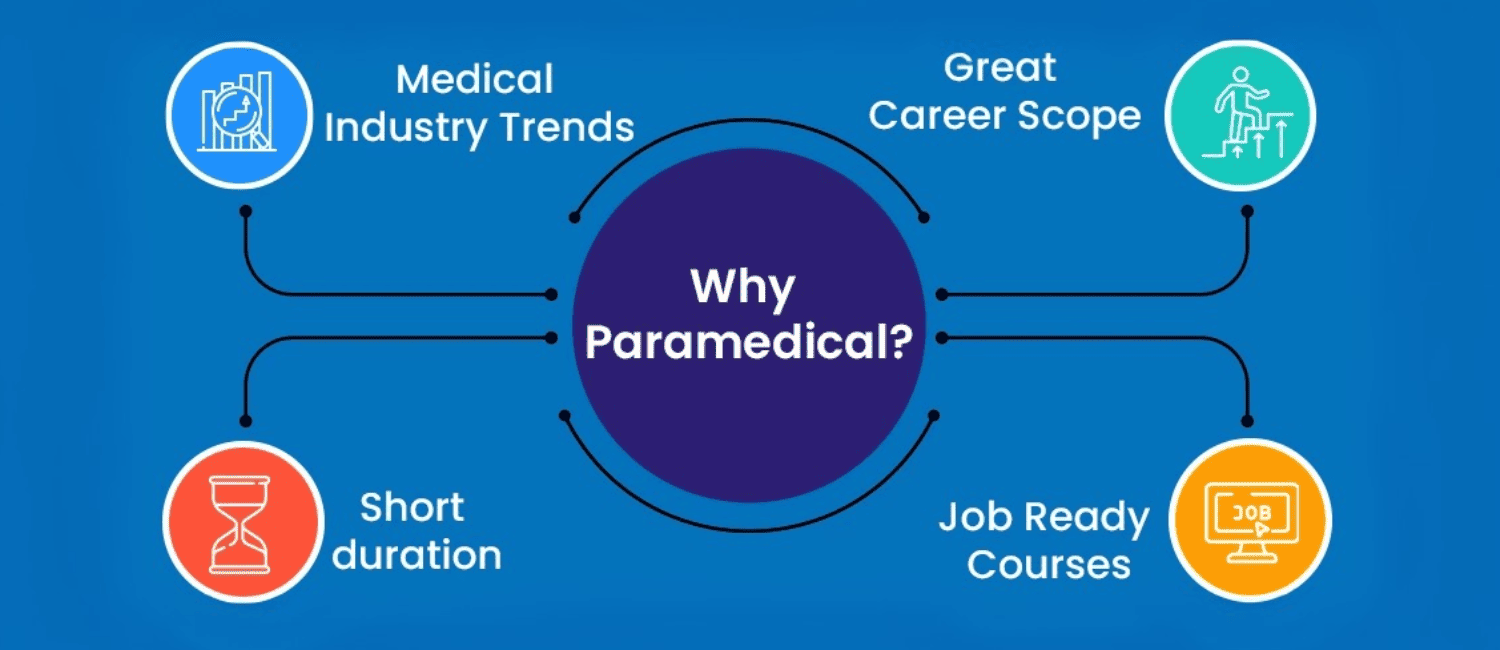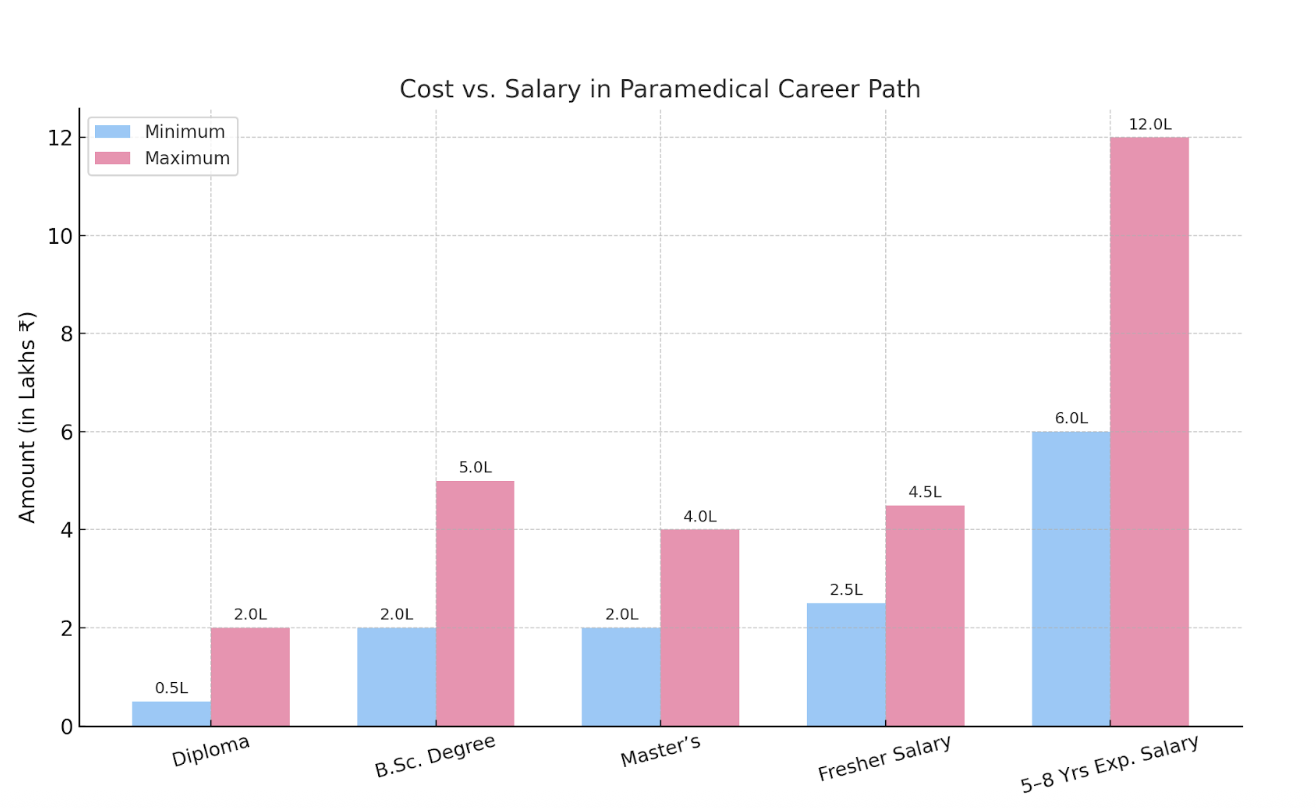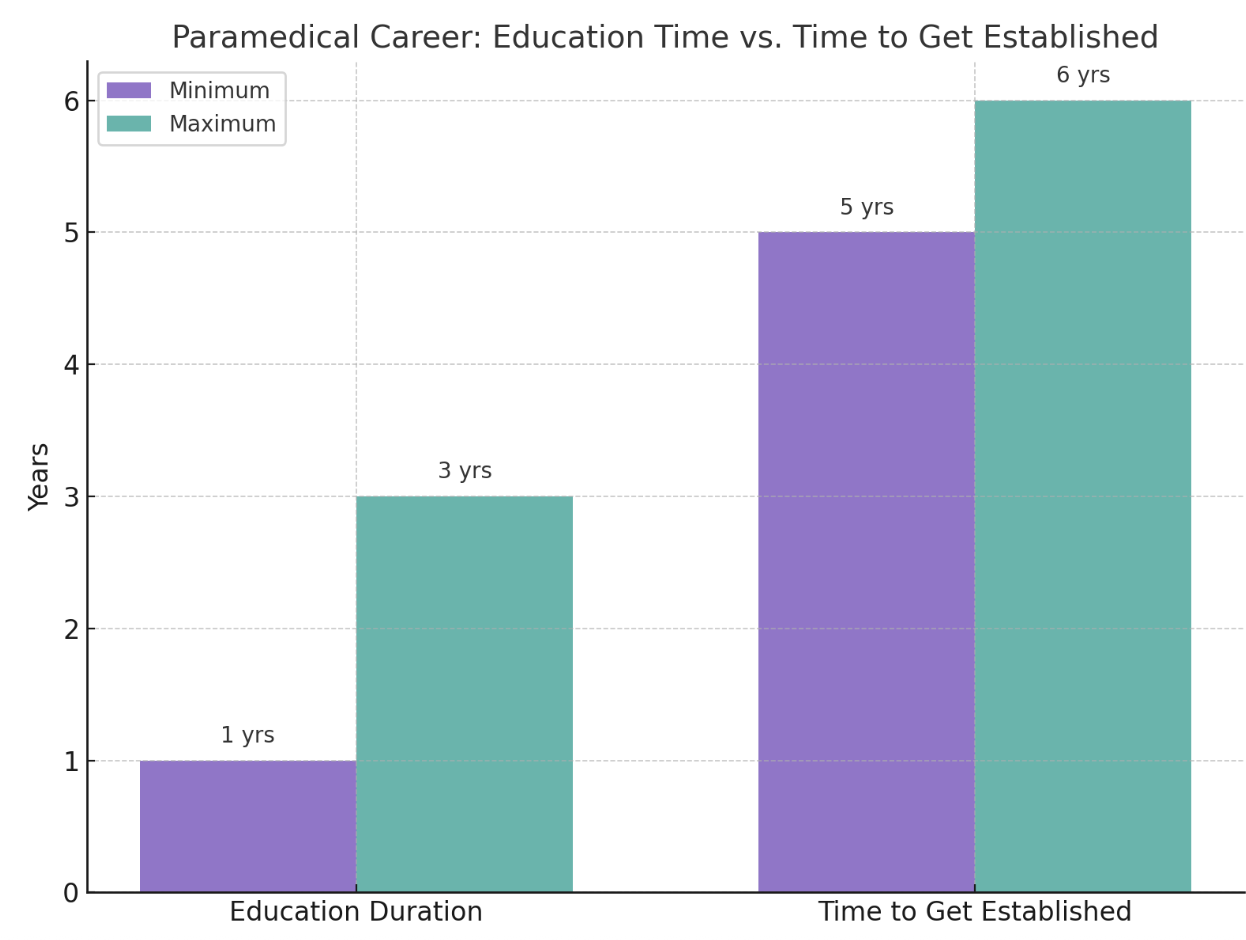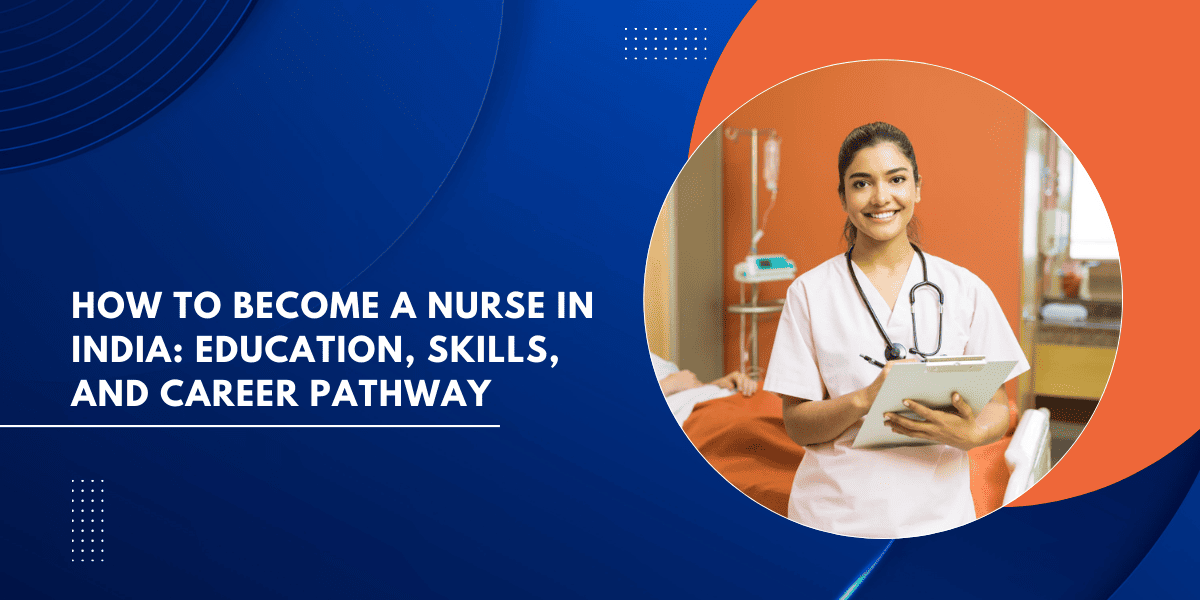Blog written by Indu R Eswarappa, Career Coach & Education Change-Maker
Hey there!
Have you ever wondered what it’s like to work in the medical field without becoming a doctor? If you’re someone who wants to be in healthcare, but the thought of years of MBBS and competitive exams doesn’t excite you, paramedical careers might be the perfect fit.
Paramedical professionals are the real hands-on heroes behind diagnostics, treatment support, and emergency response. From operating cutting-edge lab equipment to handling trauma cases in ambulances, they play a huge role in keeping the system running smoothly.
Let me tell you about Rakesh, a student from a small town near Kochi. After his Class 12 science exams, he wasn’t sure if he wanted to pursue medicine. But he knew one thing—he wanted to help people directly and practically. That’s when a career counsellor introduced him to paramedical science. He joined a diploma course in Radiography, and within two years, he was assisting in CT and MRI scans at a reputed diagnostic centre. Today, he’s preparing for his bachelor’s while working part-time, and says it’s the best decision he ever made.
Clarity makes all the difference. If you know you’re interested in healthcare but don’t want a long academic path, paramedical roles give you a solid, respected, and quicker way to get started.
Introduction to the Career
If you ask me, one of the most underrated yet impactful career paths in healthcare today is paramedical science.
Paramedical professionals are the backbone of emergency response, diagnostics, rehabilitation, and patient care. They’re the ones who act quickly when every second matters—whether it’s during a medical emergency, a lab test, or a rehabilitation session. Their work directly supports doctors, nurses, and hospitals every single day.
In India, the scope for paramedical professionals has been growing steadily. With more hospitals, trauma centers, diagnostic labs, and home healthcare services opening up, the need for trained paramedics has never been higher. Courses in radiology, dialysis, physiotherapy, operation theatre technology, and medical lab technology are seeing more enrolments each year.
Globally, the healthcare sector is leaning on skilled paramedics more than ever. According to World Health Organization insights, strengthening allied health services is a priority in many countries—including India—where quicker, decentralized healthcare is the need of the hour.
So if you’re a student (or a parent helping one out) and you’re looking for a science-based career after Class 12 without the long haul of MBBS, paramedical science gives you a direct, skill-based entry into the healthcare world.

What’s the Future Like for Paramedical Professionals?
The future for paramedical professionals in India looks bright—and fast-moving. As our healthcare system expands to reach every corner of the country, the demand for skilled paramedics is growing faster than ever.
According to a recent report by India Brand Equity Foundation (IBEF), the Indian healthcare market is expected to reach USD 638 billion by 2030. This includes huge investments in diagnostics, emergency services, rehabilitation, and home care—all areas where paramedics play a key role.
Today’s paramedical professionals aren’t just working in hospitals. They’re joining diagnostic labs, mobile ambulatory units, physiotherapy centers, dialysis clinics, and even international cruise ships and oil rigs. Some go on to become trainers, researchers, or hospital managers with a few years of experience and further education.
If you’re thinking of entering this field, know this—you’re not stepping into a stopgap job. You’re building a future-proof career that blends purpose, skill, and long-term demand. With advancements in medical technology and more awareness around preventive care, paramedics will continue to be at the frontlines of healthcare for years to come.
Key Responsibilities
In my experience, a lot of students are fascinated by the idea of working in healthcare—but they don’t always know what paramedical work really looks like day to day. Understanding the roles can help you choose the right course and specialization after Class 12.
The paramedical field is full of diverse roles. Each one focuses on a specific aspect of patient care, diagnosis, or emergency support. Here’s a closer look at some of the most common roles:
Emergency Medical Technician (EMT)
- Responds to medical emergencies and provides first-line care.
- Stabilizes patients and transports them safely to hospitals.
- Works under pressure and often in high-risk environments like accident sites.
Radiology Technician
- Handles X-rays, CT scans, and MRIs.
- Prepares patients, operates imaging machines, and assists radiologists in diagnosis.
- Ensures safety protocols, especially with radiation exposure.
Medical Laboratory Technician (MLT)
- Collects and examines blood, urine, and tissue samples.
- Runs tests that help diagnose infections, deficiencies, or diseases.
- Works with microscopes, centrifuges, and other lab tools.
Operation Theatre (OT) Technician
- Prepares the operation theatre before surgery.
- Assists surgeons and nurses during procedures by managing instruments and maintaining sterility.
- Handles post-operative clean-up and equipment care.
Physiotherapy Assistant
- Supports patients recovering from injuries or surgeries.
- Helps design and carry out physical therapy routines under a licensed physiotherapist.
- Monitors patient progress and adjusts exercises as needed.
So if you’re thinking of a paramedical career, ask yourself: Do you enjoy hands-on work? Are you calm under pressure? Do you like lab-based tasks or prefer being around patients? Your answers will help shape the best path forward.
Work Environment
From what I’ve seen, paramedical professionals thrive in practical, fast-paced workspaces where teamwork matters and every action counts. You’re often part of a larger care team, but your individual role carries serious responsibility.
Here are some of the common places where paramedics work:
- Emergency care units and ambulances
- Diagnostic labs and imaging centers
- Operation theatres in hospitals
- Physiotherapy and rehabilitation clinics
- Home healthcare services and eldercare centers
The daily routine can be very different depending on your specialization. An EMT might be racing against time in an ambulance, while a lab technician might be deeply focused on getting accurate test results.
But in both cases, the work directly impacts patient care.
As a paramedical professional, you are expected to:
- Use specialized tools and machines relevant to your role
- Follow strict hygiene and safety standards
- Communicate clearly with doctors, patients, or lab teams
- Think on your feet and make careful decisions quickly
Whether you’re inside a clean lab or helping someone walk again in a rehab center, the sense of purpose is hard to miss. It’s one of the most hands-on, meaningful careers you can step into after Class 12.

Educational Path and Entrance Exams for a Career in Paramedical Science
If you’re planning to enter the paramedical field after Class 12, the good news is—there are plenty of options. Whether you’re looking for quick diplomas or full-fledged degrees, there’s a path that fits your timeline, budget, and interest.
Here’s a structured look at popular courses and their entry routes:
Notes for Students
- NEET is not required for most paramedical undergraduate or diploma courses.
- Direct admissions are common for many private institutions, but some government colleges may hold entrance tests or use State CET ranks.
- Always verify eligibility, entrance process, and course accreditation with the official websites of the universities or colleges.
Necessary Soft Skills & Technical Abilities
If you’re thinking about becoming a paramedical professional, remember—it’s not just about completing a course or memorizing anatomy. From what I’ve seen, the best paramedics aren’t just skilled with machines or medical tools. They know how to connect with people, handle pressure, and adapt quickly in tough situations.
Many students enter the field with strong academic knowledge but find the work challenging because they’re not prepared for the fast pace, human interactions, or ethical demands. In most paramedical roles, you’re the link between technology and patient care—and that takes a balanced skill set.
Soft Skills:
- Presence of Mind: Whether you’re in an ambulance or OT, you’ll need to act quickly and calmly.
- Communication: You’ll often deal with patients in pain or distress—being clear and reassuring matters a lot.
- Teamwork: Paramedical staff work closely with doctors, nurses, and technicians. Smooth coordination is key.
- Empathy: This isn’t just a job—it’s patient care. Understanding what someone is going through makes a real difference.
- Discipline: Medical environments demand hygiene, punctuality, and complete focus every single day.
Technical Skills:
- Clinical Equipment Handling: Learning to use tools like X-ray machines, dialysis units, ECG monitors, and surgical instruments.
- Sample Collection & Testing: Especially in lab and diagnostic roles—accuracy and proper protocols matter.
- First Aid & Emergency Response: For EMTs, this is core to saving lives on the spot.
- Rehabilitation Techniques: Physiotherapy assistants need to follow structured routines and record progress.
- Medical Terminology & Documentation: No matter your role, proper charting and understanding medical language is essential.
So, if you’re aiming for a career that’s both people-centered and skill-driven, paramedical science will give you that balance. But don’t ignore soft skills—they’re what make you truly dependable in this field.
Career Progression and Growth Opportunities
One of the things I really appreciate about paramedical careers is the steady and visible growth. Whether you start with a diploma or a B.Sc., you’ll find opportunities to move forward—as long as you’re open to learning and upgrading your skills.
Some start as technicians or assistants and, with experience, climb into senior clinical roles, teaching positions, or even hospital management. Many paramedical professionals also work abroad after gaining experience and passing licensing exams in countries like the UAE, UK, or Australia.
You can also branch out into specialisations—cardiac care, anaesthesia tech, radiology, or rehabilitation therapy. Some even become trainers or open their own diagnostic or physiotherapy centers.
Typical Career Path in Paramedical Science:
- Entry-Level: Lab Technician, Radiographer, EMT, OT Assistant, Dialysis Technician
- Mid-Level: Senior Technician, OT Coordinator, Lead Physiotherapy Assistant
- Advanced-Level: Department Supervisor, Hospital Trainer, Rehabilitation Manager
- Specialised Roles: Anaesthesia Technician, Cardiac Care Technician, Neurophysiology Assistant
- Entrepreneurship & Consulting: Many experienced professionals open their own labs, wellness centers, or join as consultants in multispeciality hospitals.
In short, this field offers more than just a job—it offers a ladder. And each rung gives you the chance to grow personally and professionally.
Salary Expectations & ROI-ROT
If you’re wondering whether a career in paramedical science pays off in the long run, let’s break it down in simple terms—both in money and in time.
Return on Investment (ROI):
Paramedical courses are some of the most affordable routes into the medical field, especially compared to MBBS or BDS programs.
Education Costs:
- Diploma courses: ₹50,000 to ₹2 lakh
- B.Sc. degrees: ₹2–5 lakh across three years
- Master’s programs (optional): ₹2–4 lakh
Earnings Potential:
- Entry-level: ₹2.5–4.5 LPA (depends on role and location)
- With experience (5–8 years): ₹6–12 LPA in reputed hospitals or diagnostic chains
- Specialized roles (with certifications): Even higher in radiology, dialysis, or OT management
So yes, compared to the cost of education, the ROI is quite strong, especially if you gain early work experience and keep upgrading your skills.

Return on Time (ROT):
Education Duration:
- Diplomas: 1–2 years
- B.Sc. degrees: 3 years
- Master’s (optional): 2 years
Break-even Point: Most students begin earning within 2–3 years of starting their course. Many start working during or immediately after diplomas.
Fast-Track Options: Several students opt for a diploma right after Class 12, then pursue a B.Sc. through lateral entry—cutting down both time and cost.
If you’re looking for a career that lets you start earning early, paramedical roles are a smart, low-risk option with real earning potential.

Future Prospects: The Next 20–30 Years
Paramedical careers are here to stay—and grow. As healthcare needs expand across India, especially in smaller towns and rural areas, paramedical professionals are becoming more crucial than ever.
- With telemedicine, home healthcare, and preventive diagnostics on the rise, the demand for trained paramedics is increasing across new formats.
- Roles like radiology technologists, cardiac care technicians, physiotherapy specialists, and emergency medical responders will only get more specialized and essential.
- Government schemes like Ayushman Bharat and growing private healthcare networks are creating more structured roles for allied health professionals.
Over the next few decades, you’ll see paramedical science expand into sports medicine, robotic surgeries, rehabilitative care, and even international placements.
So if you’re thinking long-term, this is a career that promises both relevance and stability.
Final Thoughts
Thinking about becoming a paramedical professional? It’s a great choice if you’re looking for a practical, purpose-driven career without going through the long and costly MBBS route.
Whether you want to work in labs, support surgeries, help in emergencies, or assist in recovery and rehab—there’s a place for you in this field. And the best part? You can start right after Class 12.
If you enjoy helping people, love science, and want to see direct results from your work, this might just be your calling.
I hope this guide gave you a clear picture of how to get started. And if you’re still unsure about which paramedical path suits you best, feel free to reach out—I’d be happy to help!
Resources & References Used
- India Brand Equity Foundation (IBEF) – Healthcare Sector Overview
- World Health Organization (WHO) – Allied Health Workforce Report
- National Skill Development Corporation (NSDC) – Healthcare Sector Skill Council
- Amrita Vishwa Vidyapeetham – School of Allied Health Sciences
- Chettinad Academy of Research and Education – Paramedical Courses






















